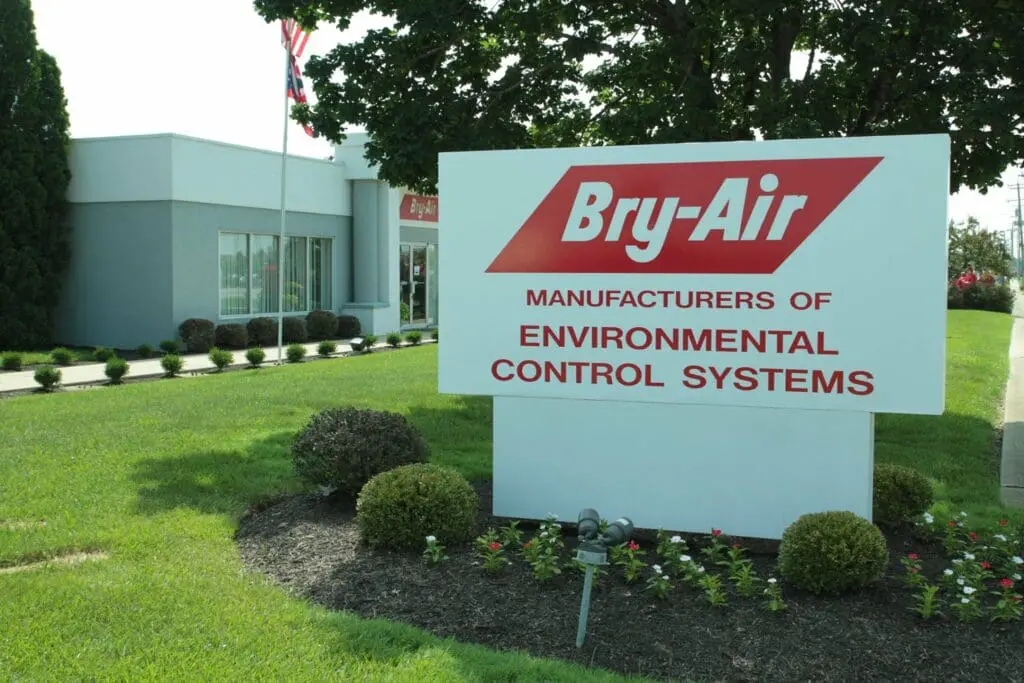Dehumidification in the Electronics Industry

Excessive humidity has a profound ability to cause damage across many different industries, and the electronics industry is no exception. As you would expect, the high-tech components that facilitate the main function of computers, laptops, and mobile devices must be finely tuned in order to operate properly. When air moisture is high, those key functional pieces can corrode to the point of being completely unusable. The good news is that dehumidification in the electronics industry can prevent these costly complications. In this article, we’ll detail all of the ways that electronics manufacturers and users stand to benefit from dehumidification.
Dangers of Humidity in the Electronics Industry
When people fail to keep humidity in check in the electronics industry, there are several issues that can arise, almost all of which can lead to electronic devices becoming completely unusable.
For example, prolonged humidity can cause circuit points to corrode. It also results in build-ups of condensation on the surfaces of microchip circuits and prevents the proper adhesion of photoresists. All of those problems ultimately lead to failure during the process of semiconductor assembly.
Since semiconductors are foundational to a wide range of common electronics, if manufacturers are unable to create them successfully, they will essentially be unable to produce any electronics at all. As such, a lack of dehumidification in the electronics industry is not only a nuisance but also a significant threat to overall production, profits, and business success.
Additionally, there are a few common components in electronics, such as lithium batteries, that become entirely unsafe when humidity is present. In extreme cases, these items can even cause explosions when air moisture is too high. This means that dehumidification in the electronics industry is also a vital safety practice that can prevent injuries and save lives.
Dehumidification for Electronics Manufacturers
Dehumidification is crucial during most, if not all, stages of the electronics manufacturing process. Controlling humidity not only ensures the functionality of the electronics being produced but it also helps the machines used to produce them run more efficiently. Without commercial dehumidification, those machines would corrode, run with less efficiency and precision, and have a shorter overall lifespan.
As mentioned in the previous section, dehumidification is also critical for guaranteeing that the core components of manufactured electronics work properly and helps to prevent explosions and other accidents that can occur during the manufacturing process.
After successful production, dehumidification can also play a helpful role in the shipping and storage of electronic equipment. Without dehumidification, air moisture can cause the same problems mentioned above while electronics are on their way to the locations where they will become available for purchase.
Simply put, dehumidification is not something you can overlook if you are an electronics manufacturer. Providing proper dehumidification helps you produce viable electronics in an environment that is safe for all those involved in the manufacturing process while also providing well-functioning electronic products to end consumers.
Dehumidification for Electronics Users
Those who manufacture are not the only ones who stand to benefit from dehumidification in the electronics industry. Instead, consumers who use electronics in their homes and offices should also consider using dehumidification to maintain the integrity of those electronics during use.
Even small amounts of dampness can cause a surprising amount of damage to both the interior and exterior of electronic devices. That damage can range from minor electrical faults to extreme complications that make your electronics completely unusable.
While most electronics users don’t take much time to consider how humidity might affect their devices, it is a consideration that is wise to make. The simple act of running a dehumidifier can drastically increase the lifespan of your electronic devices and allow for more efficient operation throughout that lifespan.
Of course, the degree to which dehumidification is necessary for electronics users depends on many factors. Mainly, it is important to have an understanding of the relative humidity that exists in the areas where you use and store your electronics, which will give you an indication of how necessary dehumidification is for you. It’s also important to note that changes in seasonal weather can also affect humidity, and thus, your need to use dehumidification to keep your electronics intact.
Moisture Control Standards for the Electronics Industry
When it comes to dehumidification in the electronics industry, it is necessary to understand the established standards on the topic. After first learning about the need for dehumidification, the next step is to learn how much dehumidification is required.
Fortunately, there are some well-known best practices that you can follow in this regard. In most cases, it is best to keep a relative humidity of 30% in the locations in which electronics are manufactured, shipped, and stored. This low level of humidity will reduce the risk of operational failure and make for a safer work environment that leads to the production of high-quality electronic devices.
Best Type of Dehumidifiers for the Electronics Industry
While there are many different types of dehumidifiers on the market today, not all of them are equally capable of meeting the ideal dehumidification standards within the electronics industry. As such, anyone working in this industry must become aware of the most advantageous dehumidification systems that they should use.
Overall, a type of dehumidifier known as a desiccant dehumidifier is best for the electronics industry for several reasons. For instance, during manufacturing and testing, it is often necessary to maintain lower air temperatures to allow for safe machine operation. Desiccant dehumidifiers are often the most efficient type of dehumidifier when operating at colder temperatures.
Additionally, desiccant dehumidifiers are able to achieve lower levels of relative humidity compared to other dehumidification options. This is especially important to note, considering the need for 30% relative humidity or lower during electronics manufacturing. On top of those benefits, desiccant dehumidifiers typically come with the convenience of being quieter during operation.
The dehumidification needs of electronics manufacturers and users will obviously differ from one another. While manufacturers require entire dehumidification systems in their facilities, consumers will do well with one or more strategically placed dehumidifiers. However, in either case, using a desiccant dehumidifier for the electronics industry is the most reliable approach.










